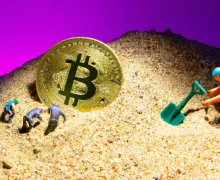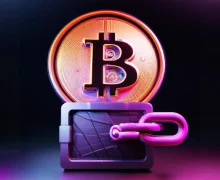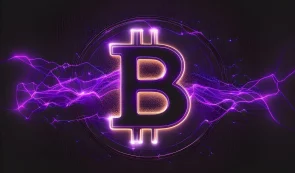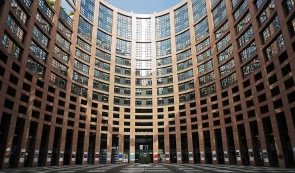Play-to-Earn Explained
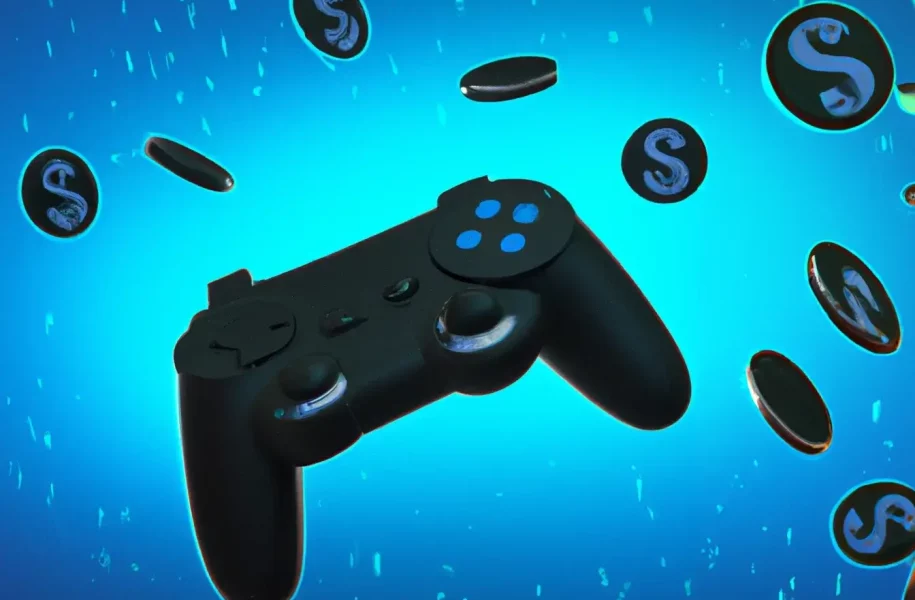
After the NFT boom of 2021, a new trend was thought to change the gaming world. Play-to-Earn is considered a game-changer in the blockchain space, and its potential to gain worldwide adoption is the main reason this new “crypto-meets-gaming” trend is so popular among young investors.
Players are starting to realize the value of Play-to-Earn games. They want a more prominent involvement in games and to own the assets they’ve put in the effort to acquire.
However, for some players, these things don’t matter that much. For them, it’s all about making money.
Blockchain gaming
First of all, blockchain games (better known as NFT or crypto games) are video games that have integrated blockchain technology, cryptocurrencies, and non-fungible tokens in which players are allowed to buy, sell or trade in-game items among themselves. This system is created for players to monetize their gaming experience.
Play-to-Earn (P2E) games are a subcategory of blockchain games in which you can earn cryptocurrency while playing.
The gaming industry is in an uproar since statistics in 2021 show that around 3 billion gamers worldwide generated billions of dollars in revenue.
Even though the industry is thriving, there is still room for more growth as investments in the industry grow exponentially. This can be attributed to the rise of NFTs and blockchain technology – particularly P2E gaming.
The concept behind Play-to-Earn gaming
As we mentioned, Play-to-Earn gaming is based on profiting from accumulating cryptocurrencies while playing your favorite games and selling them afterward for cash.
The central concept behind earning while playing is that the more you play, the more you make.
Don’t expect just to join a P2E game and start earning without making any effort – this type of gaming also requires skill and strategy. That being said, the more experienced you are, the more money you can earn.
How does Play-to-Earn work?
Usually, P2E games are divided into two groups:
Those using a native cryptocurrency
The game’s developers can create their own cryptocurrency in the form of tokens. Crypto tokens, in basic terms, are the same as in-game currencies, but unlike them, they have real-world value.
Идеалният пример за такъв тип игра е Axie Infinity, която използва две криптовалути – SLP и AXS. И двата токена са изградени на Етериум блокчейна и както всяка друга криптовалута имат типичните признаци на волатилност.
Those using an existing cryptocurrency
Some games use another approach by relying on existing cryptocurrencies like Bitcoin, Ethereum, Dogecoin, Cardano, etc.
Most of them have the common trait of being named after the cryptocurrency they use (e.g., Bitcoin Pop, Bitcoin Tycoon) and names using the term “crypto,” such as CryptoKitties, CryptoDragons, etc.
The difference is that it takes some time before a player can accumulate a significant amount to cash out.
In both groups, players earn by participating in different tasks, contests, and other in-game activities.
One of the main distinguishing characteristics of P2E games is their decentralization. Successful projects (and not only) are done interactively between the developers and players, who give constant feedback.
It is common for the players to form a decentralized autonomous organization (DAO) for further community-building.
However, it is not necessary to be a part of the DAO to contribute to the game’s development – they can play the game and generate value for other players by participating in the in-game economy.
Are Play-to-Earn games Free-to-Play?
Some developers make their games free-to-play, where you can earn NFTs as rewards by just playing the game. Everything you need to do is dedicate some time.
Other games require the players to make an upfront investment to start playing. These games are also known as pay-to-earn.
Despite their differences, these games still fall into the same category. In both, players can generate value that brings potential profit.
NFT Ownership in Play-to-Earn Games
The NFT in a P2E game is the players’ property – not the developers’, not the games’. Even if the game stops working, the player still owns the asset.
For the player to increase the value of his/hers NFT, they need to commit to the game. It is rare to see someone make profits without contributing to the game by interacting with the ecosystem.
Players can sell their NFTs afterward in different dedicated marketplaces, where they can get paid in cryptocurrency – which you can exchange for fiat.
Popular Play-to-Earn games
Here is a list of the most popular P2E games:
Gods Unchained
Gods Unchained (GODS) is a blockchain-based, free-to-play competitive trading card game that rewards you for playing. The game is based on the Ethereum blockchain that brings actual digital ownership to players and provides the means to earn items that matter.
GODS is a card game resembling Hearthstone, Magic: The Gathering, and Yu-Gi-Oh, where players must use their wits and decks to battle others and build up their tactics.
Just like your regular trading card game, certain cards in Gods Unchained are very valuable and can be sold as NFTs. The in-game feature “Forge” allows players to combine non-NFT cards and create a “Meteorite NFT Card.”
The game also offers weekend-ranked PVP matches where players are granted expansion packs, which contain NFT cards of varying rarity, depending on the performance.
Decentraland
Decentraland is a fully decentralized digital game based on the Ethereum blockchain that represents an open-world metaverse where users can buy and sell digital real estate or wearables for avatars, socialize, and interact with each other, play games, exchange collectibles. Many of the ecosystem’s activities include attending scheduled community events, which can consist of concerts, movie screenings, and casino nights.
Users can run a fully immersive virtual reality world they create, in which they oversee it through its DAO, a decentralized autonomous organization. Through DAO, users can vote directly on the game and the organization’s policies which gives them control over their environment.
Decentraland’s three native tokens are LAND, Estate, and MANA. LAND and estate are considered non-fungible tokens (NFTs) as they’re not interchangeable. This means that they don’t act as currencies but are used to create avatars, wearables, and unique parcels of land – unlike MANA, which acts as the project’s cryptocurrency.
Clusters of land parcels have different characteristics. Decentraland’s squares include Vegas City, District X, a red-light district, Fashion Street, Dragon City, and those based on other themes.
The Sandbox
The Sandbox is a Play-to-Earn 3D metaverse project combining NFTs, DeFi, and blockchain technology. Here you can create and customize your digital assets with the free design tools, which can be monetized as NFTs and sold for SAND tokens.
SAND is the native ERC-20 token of The Sandbox and is used as the basis of all transactions and interactions in the game. SAND can be earned through games and contests in The Sandbox or purchased on cryptocurrency exchanges like Binance. The total supply of SAND is 3 billion tokens.
You can think of The Sandbox as a DeFi version of Minecraft on the blockchain. The platform is built on the Ethereum blockchain, where players can create their avatars to access different games, environments, and hubs.
You can create your own games using the VoxEdit and Game Maker tools.
VoxEdit is software for artists and players to create and animate 3D NFTs, which look like lego blocks. Someone can also edit them to form different shapes – you can alter clothing, weapons, design animals, landscape, game tools, etc.
Players within the ecosystem need to own SAND to play the game, customize avatars, buy LANDs, and trade assets on The Sandbox marketplace.
SAND holders can vote on changes to the platform through a DAO structure. You can also stake your tokens within the game to earn rewards.
Axie Infinity
Axie Infinity is a competitive online game revolving around creatures known as Axies. Axies are virtual pets that can battle and be bred and raised to help you build your kingdom. The Ethereum-based game allows players to own their virtual assets and rewards players who can reach an advanced skill level.
In Axie Infinity, you can buy, sell and trade your resources in-game.
The game is based on the Ethereum sidechain Ronin, which minimizes fees and transaction delays. You can test your Axie vs. other players as well as computer-controlled teams.
Items in the game are represented by NFTs, where you have actual ownership over your assets, and you can earn money in the marketplace. Some Axies have even sold for astonishing prices of over 300 ETH. You can breed your Axies to build potentially more powerful teams.
Axis Infinity Shard (AXS) is the governance token of the network – you can use it to pay for your breeding fees in-game. AXS is created in order to decentralize the ownership and governance of Axie Infinity and build a long-lasting ecosystem. Since the basic structure of the platform is a decentralized autonomous organization (DAO), holders can vote on decisions regarding the project’s development and stake their tokens.
A Smooth Love Potion (SLP), formerly known as a small love potion, is a reward token within Axie Infinity that players can earn in specific ways by playing the game in battle or adventure mode.
Unlike AXS, SLP has a fixed supply cap of 270 million tokens.
Lunacia, the Axie homeland, is a tokenized plot of virtual land called Terra. It will act as home base of operation for players’ Axies.
In 2020, Sky Mavism, the company behind the popular Play-to-Earn game, estimated that a new player would need to spend around US$400 to meet the starting requirement. Reports from 2022 suggest the floor price of an Axie has dropped to around $20.
Crypto Kitties
Crypto Kitties is the first blockchain game built on Ethereum, allowing players to buy, trade and breed virtual cats.
It is one of the earliest attempts to deploy blockchain technology for recreation and leisure. The game’s popularity in December 2017 congested the Ethereum network, causing it to reach an all-time high in the number of transactions and slowing it down significantly – which raised the question about the network’s scalability issues.
Players purchase, breed, and trade these cats with different visual features of varying rarity levels. Players must buy ETH to join the game and spend it to perform each breeding and trade activity.
Each CryptoKitty is a unique non-fungible ERC-721 token, validated through the blockchain, and its value can appreciate or depreciate based on the market. CryptoKitties cannot be replicated or transferred without the user’s permission, even by the game developers.
However, the CryptoKitty art is not on the blockchain and is instead owned by Axiom Zen. The company released some of the art under a new ‘Nifty’ license that lets players use the image of their CryptoKitty in a limited way.
Generation 0 CryptoKitties were sold to players in an auction at one every 15 minutes (672 per week) for one year. New CryptoKitties are created by breeding existing CryptoKitties.
Based on the limited number of cats going into circulation and their limited genomes, there is a limit of around 4 billion cats that can be bred. Each cat has a distinct visual appearance (“phenotype”) determined by its immutable genes (“genotype”) stored in the smart contract.
